Sorted by date Results 26 - 50 of 72
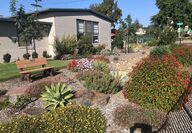
The American West is ablaze. Wildfires are raging in every state along the West Coast and in almost every state from the Pacific to the Rocky Mountains. Land, homes, lives and whole communities are lost. As my pen brings these thoughts together, over 3 1/2 million acres have burned to date, more than any other year, and now millions of people are breathing toxic air from these fires. It is not just that entire weather patterns are changing, but there many other factors that co...

I am in great appreciation for every step I take upon the earth where a world of wonder lives in the soils below my feet. The soils are a miraculous environment of vibrant activity, and soils supply plants the nourishment for the foods that we eat daily. Understanding the organic soil world below your feet might make you a better gardener and a person who understands a little about its complexity down below the crust of the earth. You will come away having a greater respect...
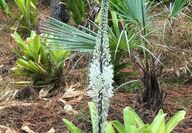
When the hot summer months start to ramp up the thermometer out in the garden, nature decides to bring gardeners some exotic bulbous plants that excite their landscape settings, and I say, "Wow, where did that come from?" Bulbous plants in summer have a specific internal time clock. When the hot months of July, August and September arrive, here they come, and a botanical surprise occurs in the garden when least expected. I am mesmerized by bulbs from South Africa and the...
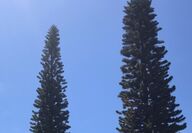
The trees that anoint our little hamlet called Fallbrook are immigrants from around the world that dot our hillsides, shelter our homes and give us so many benefits. As you drive over the hill from the north or come up Hwy. 76 and enter our verdant hills, Fallbrook is uniquely dotted with avocado, citrus and ornamental trees from every continent of the world. This is what gives such a definite charm to our village and this is why so many of us live here. We have our beloved...

The story behind the victory gardens is over half a century old. They were started during World War II when Americans grew their own veggie gardens to supplement fresh produce for the country. Many farmers and young men went to foreign lands, and farms were depleted of that large labor force. So, women and children stepped up to the plate and started the victory gardens and war gardens of the 1940s. Since all types of foods were rationed during that time, civilians were...

Pollinators are essential for our food supply and the plant diversity we find in nature across our nation is up against some severe threats. There are hundreds of species of native bees that pollinate so many of our food crops, as well as the iconic monarch butterfly. The average backyard is home to thousands of insects. Only about a tenth of them are destructive; most of them are either beneficial or harmless. Yet the chemical industry promotes deadly bug killers, the use of...
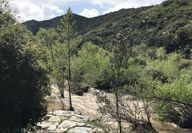
Earth Day is an annual event held around the world, April 22, to demonstrate the need for environmental protection and is celebrated by over 1 billion people globally. First celebrated in 1970, it now includes events coordinated by Earth Day networks in more than 193 countries and is 50 years young this year. Man has dwelt on this planet for a long time. Spring has been the season for rebirth, with the singing of birds to rejoice in regrowth. Now in many parts of the world,...
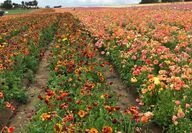
San Diego County has many great horticultural venues that grow all types of plants in the Mediterranean climate of Southern California. The Carlsbad Flower Fields is one of spring's most floriferous fields that grows a bounty of flowers year after year. This all began when Luther Gage settled in the area in the early 1920s and introduced the ranunculus flowers which eventually began known as the Giant Tecolote Ranunculus bulbs. The Spanish name Tecolote came from the owls that... Full story

Julius Sterling Morton was a man with a mission and a vision of helping the Earth with the planting of forest and fruit trees back in 1872. Morton proposed the nation's first tree-planting holiday in Nebraska, and a century later, the Arbor Day Foundation was founded. For more than a century, the National Arbor Day holiday continued to embody tree plantings as it was launched to bring the spirit of stewardship to the forefront. Arbor Day is celebrated March 28, with different... Full story
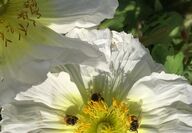
Of the over 4,000 bee species native to North America, the mason bees are the easiest to raise and are indigenous to the area. These bees are also gentle and amazing pollinators for fruits, veggies and flowers around the home landscape. These bees are different from the honey bees, for gardeners can raise them in the backyard by providing nesting sites in a simple mason bee house. A female mason bee carries pollen mainly on the underside of her hairy abdomen and scrapes the po... Full story

In 1792, Robert Thomas, founder of the "Farmer’s Almanac," a bookseller, schoolteacher, and amateur astronomer living near Boston, Massachusetts, began a North American institution when he published the first issue of his "Farmer’s Almanac." The word "Old" was added in 1832. He soon distinguished his almanac from others, writing in one of the early issues, “we must strive he said to always be useful, with a pleasant degree of humor.” This timeless formula has made "The Old Far... Full story

Midwinter in Southern California is the time of year when gardeners should be taking care of their fruit trees to enjoy summer fruit for their table. With such diverse climatic zones in California, the vast array of fruit trees can produce an abundant amount of fruit for months on end with proper planning. But in order to obtain the fruit, there are some stewardship items to take into consideration, and one of them is winter pruning. The first question is, do I have the right...

Here are some resolutions for you to consider for the New Year: Help cool the planet and plant more oaks and trees – "the right tree in the right place." Practice more earthly endeavors with your family, friends and neighbors, be kind to one another. Be a part of the Live Oak Park 100-year centennial celebration next July at the park in Fallbrook. Give back to your community, for there are many volunteers needed in our friendly village. Give youngsters a book called "Vitamin N...

Her name is Julia Butterfly Hill, and she was born in 1974 in Mount Vernon, Missouri. Her father was a traveling minister, and Hill, with her two brothers and mother, toured the country in a 32-foot camper while her father preached the gospel. She spent many days of her early childhood playing outside, enjoying the woodlands and rivers near towns where her father was preaching. When she was six, Hill was hiking with her family, and a butterfly landed on her finger and stayed... Full story

Special to Village News If you are interested in growing a really easy bulb from the Natal region of South Africa, the scadoxus albiflos is the white flowering winter bulb for you. I have been growing many species in the amaryllis family for years, which the scadoxus bulbs are in and very easy to grow. South African offers a vast array of wonderful bulbous plants that do quite well in our Mediterranean climate of Southern California These unique bulbs were some of the first... Full story

While attending California State Polytechnic University San Luis Obispo many years ago, I had the great fortune to work at the Dos Pueblos Orchid Company in Goleta, just north of Santa Barbara. I worked on weekends and the summertime as one of five full-time estate gardeners for the main ranch-style house gardens alone. This 45,000-acre ranch land expanded from the Pacific coastline up to the Santa Ynez Mountain Range to the east. Highway 101 and the Amtrak trains runs...

Special to Village News What's more iconic than California's golden hills and dales dotted with the state's native oak trees? California's landscape has some of the most diverse plants and flora on this planet and it needs our help now. Native oaks are a vital important component of the vegetation of California and they grow in a wide variety of habitats that helps provide a distinctive character to our entire state. They provide food and shelter for many wildlife species,...
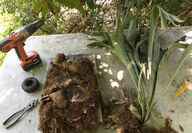
Staghorn ferns have been hanging around our gardens for years and have become a noble plant to have in any landscape setting. Platycerium bifurcatum is one epiphytic species of ferns and grows up in the canopies of trees from Australia, South America, Thailand, Africa, Madagascar, Asia and the Philippines. These are plants that have elevated their lives to grow high up in the branches of trees and collect rainfall, fog, mist, falling leaves, and assorted animal castings into t...

During the Mesozoic age, and before the extinction of flowering plants, ferns, horsetails, aquatics, and cycads flourished, dating back 250 million years. If we turn our botanical time clock back millions of years ago, we would see a completely different flora and fauna on this planet we call home. The earth was dotted with ancient cycads covering most of the continents, and they were a food source for the giant herbivorous dinosaurs such as stegosaurus in the Jurassic...
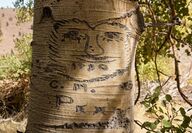
The carvings on aspen trees and other soft woods was a way that Basque sheepherders would leave their mark out in the west. Large ranches in the western United States were raising vast amounts of sheep to supply food for the railroad workers in the developing train empire across America from the 1850 to the 1930s. One supply of food was being raised by Basque sheepherders who migrated to California, Oregon, Nevada, and Idaho out in the western prairies and up in the aspen... Full story

My entire life has been surrounded by nature and the wonderful world of trees and the fabulous plant kingdom. As a young lad, I had the opportunity to live on my grandfather’s farm and woodlands of northern Sweden for many summers. I was always fascinated by the vast abundance of plants in that Nordic habitat in the land of the midnight sun. I spent summers hand cutting hay with a scythe and raking it with a wooden rake into piles and then pitched the cut hay up onto h... Full story

Do you like trees? Do trees mean something to you? Are you a collector of different, unique and flowering trees? Well, this week, I present Schotia brachypetala. Common names include the African walnut, tree fuchsia, weeping boer-bean and I call it “wonderful” for many garden settings. The genus Schotia was named after Richard van der Schot who was from Delft, Holland, and was the head gardener at the Imperial Garden in Vienna. This tree is in the Fabaceae family and is rel...
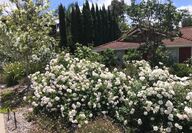
Welcome again to my world of trees, plants, environment and stewardship for the flora of the earth. Today's glorious find is the white flowering Chionanthus retusus, the Chinese fringe tree which is native to China, Japan and Korea. In the genus name, "chino" means snow, and "anthus" means snow-white flowers. The tree is classified into the Ooleaceae, or the olive family, and is a wonderful tree for gardens throughout Southern California The blossoms begin in May and June,... Full story

Do you enjoy nature and working outdoors in the garden, taking a hike in forests or maybe tending to your summer vegetable plot? If these activities help you to have a connected feeling to nature, why not have that same comfort zone with some interior plants inside your home? It is a proven fact that house plants give people a sense of comfort, lessen stress, increase physiological ease and help reduce air pollutants. Plant explorers for centuries have scoured the earth to...

My life has been dedicated to the natural world and the caring of flora and fauna throughout California, but what I see being done to trees today really concerns me and it is a shame how some trees are treated unfairly. When the public sees the topping of trees, it becomes like a plague in the neighborhood. The public thinks this is how trees should be treated, and it is not so. Trees are life for they bestow upon us a host of benefits that is part of the green world. They giv...